Imagine a world where streetlights not only illuminate the night but also chat with each other like old friends. Welcome to the age of IoT street lighting, where technology meets urban design in a dazzling display of efficiency and innovation. These smart lights don’t just flick on and off; they adjust their brightness based on pedestrian traffic or even the mood of the neighborhood—because who wouldn’t want a disco vibe on Friday nights?
As cities grapple with rising energy costs and the need for sustainable solutions, IoT street lighting emerges as a beacon of hope. It promises to save energy, reduce maintenance costs, and enhance public safety—all while making the streets a little more lively. So, buckle up as we dive into how these high-tech lights are transforming urban landscapes and lighting the way to a smarter future.
Table of Contents
ToggleOverview of IoT Street Lighting
IoT street lighting transforms urban environments by integrating technology into traditional lighting systems. These smart streetlights utilize sensors, communication networks, and data analytics to optimize functionality. They adjust brightness based on pedestrian traffic conditions, weather, and ambient light levels. This approach enhances safety and reduces energy consumption simultaneously.
Benefits of IoT street lighting include noticeable energy savings, which can reach up to 50-75%. Reduced maintenance costs arise from remote monitoring, which alerts municipalities to outages or malfunctions. Increased lifespan of LED fixtures also contributes to lower overall expenses.
Public safety improves as well through adaptive lighting solutions. Enhanced visibility in high foot traffic areas offers a deterrent against crime. Furthermore, smart streetlights can connect to emergency services, expediting response times.
Cities can gain valuable data insights from these systems. Analyzing traffic patterns helps policymakers make informed decisions regarding urban planning and infrastructure upgrades. Integration with other smart city initiatives, such as traffic management and waste collection, creates a cohesive urban environment.
Examples of implementation vary globally, with cities like Los Angeles and Barcelona leading the way. These pioneers have demonstrated significant improvements in both energy efficiency and public safety. Municipalities exploring IoT street lighting can expect a modernized approach to urban management.
Innovative features like remote control and scheduling further enhance the effectiveness of IoT street lighting. These capabilities enable dynamic responses to real-time needs, ensuring a proactive approach to urban illumination. Such advancements clearly illustrate the technology’s potential to reshape city living and create smarter, more sustainable urban spaces.
Benefits of IoT Street Lighting
IoT street lighting offers numerous advantages that enhance urban living. Key benefits include energy efficiency, cost reduction, and improved safety and security.
Energy Efficiency
Energy efficiency significantly improves with IoT street lighting. Smart lights can adjust brightness based on real-time data such as pedestrian traffic. This capability can result in energy savings of 50-75%. Cities utilizing this technology not only reduce energy consumption but also contribute to a decrease in greenhouse gas emissions. Adaptive lighting ensures streetlights remain bright when needed and dims in lower traffic scenarios. Advanced sensors optimize usage, leading to a sustained reduction in overall energy bills.
Cost Reduction
Cost reduction emerges as another major benefit of IoT street lighting. Remote monitoring capabilities allow for proactive maintenance, leading to decreased operational costs. Cities can reduce the need for frequent manual inspections and repairs. Smart lights typically feature longer lifespans, minimizing replacement expenses. Many municipalities also experience lower energy bills due to optimized usage patterns. Overall, these systems streamline resource allocation, freeing up funds for other essential city projects.
Enhanced Safety and Security
Enhanced safety and security represent crucial aspects of IoT street lighting. Improved visibility in high foot traffic areas helps deter criminal activity. Integration with emergency services allows for faster response times in critical situations. Data collected from smart lighting can inform urban planning, addressing unsafe conditions effectively. Furthermore, these systems can alert authorities about unusual activity or outages, ensuring neighborhoods remain well-lit and secure. Enhanced safety measures contribute to a sense of community well-being, encouraging residents to engage more actively in their surroundings.
Key Components of IoT Street Lighting Systems
IoT street lighting systems consist of several key components that enable smart operations and enhanced efficiency. Each element plays a vital role in creating a connected urban environment.
Smart Sensors
Smart sensors detect environmental factors and user activity. They monitor pedestrian traffic, light levels, and weather conditions. The ability to adjust brightness based on real-time inputs leads to significant energy savings, as lights operate only when necessary. Additionally, sensors can track vehicle movements, paving the way for adaptive lighting scenarios that increase safety in high-traffic areas. Examples of these sensors include motion detectors and ambient light sensors, which continually feed data to the control systems.
Communication Networks
Communication networks facilitate seamless information exchange between components. These networks utilize technologies like cellular, LoRaWAN, and Wi-Fi to create a robust infrastructure. Reliable data transmission ensures timely responses from the control systems, enabling effective management of the lighting. The integration of low-power wide-area networks enhances coverage in urban environments, allowing notifications about luminaire conditions. This connectivity not only supports real-time monitoring but also aids in remote diagnostics, reducing the need for on-site inspections.
Control Systems
Control systems act as the brain of IoT street lighting. They analyze data received from sensors and communication networks, determining the optimal lighting levels for various conditions. Advanced algorithms enable automatic adjustments for energy efficiency and safety. Many control systems offer user interfaces for city managers, allowing customizable settings and scheduling. Furthermore, these systems integrate with smart city initiatives, connecting to emergency services and other infrastructure to enhance overall urban efficiency.
Challenges in Implementing IoT Street Lighting
Implementing IoT street lighting involves various challenges that cities must address to fully leverage benefits.
Technical Limitations
Technical limitations often hinder the effectiveness of IoT street lighting systems. Connectivity issues can arise due to inadequate network infrastructure, affecting data transmission between devices. Sensor inaccuracies might lead to improper lighting adjustments, failing to meet real-time needs. Compatibility issues with existing systems could complicate integration efforts, requiring additional resources and time. It’s essential for cities to invest in robust technology solutions to enhance reliability and performance.
Cost Implications
Cost implications represent a significant factor in the implementation of IoT street lighting. Initial setup expenses can be high, encompassing equipment procurement, installation labor, and network infrastructure. Although operational savings occur over time, the upfront investment may strain municipal budgets. Ongoing maintenance costs must also be considered, especially for systems requiring regular upgrades or repairs. Cities often need to secure funding through grants or public-private partnerships to mitigate these financial challenges.
Privacy and Security Concerns
Privacy and security concerns accompany the use of IoT street lighting systems. The collection of data from sensors raises questions about user privacy and data protection. Unauthorized access to connected systems may create vulnerabilities, potentially leading to cyber threats. Cities must implement stringent security measures, such as encryption and access controls, to safeguard sensitive information. Developing transparent data policies can help instill public trust while balancing innovation with residents’ rights to privacy.
Conclusion
IoT street lighting represents a significant advancement in urban infrastructure. By harnessing smart technology, cities can enhance energy efficiency and improve public safety while reducing operational costs. The integration of these systems with existing smart city initiatives offers a holistic approach to urban management.
Despite the challenges associated with implementation, the potential benefits far outweigh the drawbacks. With continued investment and innovation, IoT street lighting can pave the way for smarter, more sustainable cities. As more municipalities adopt this technology, the future of urban living looks brighter and more connected.




